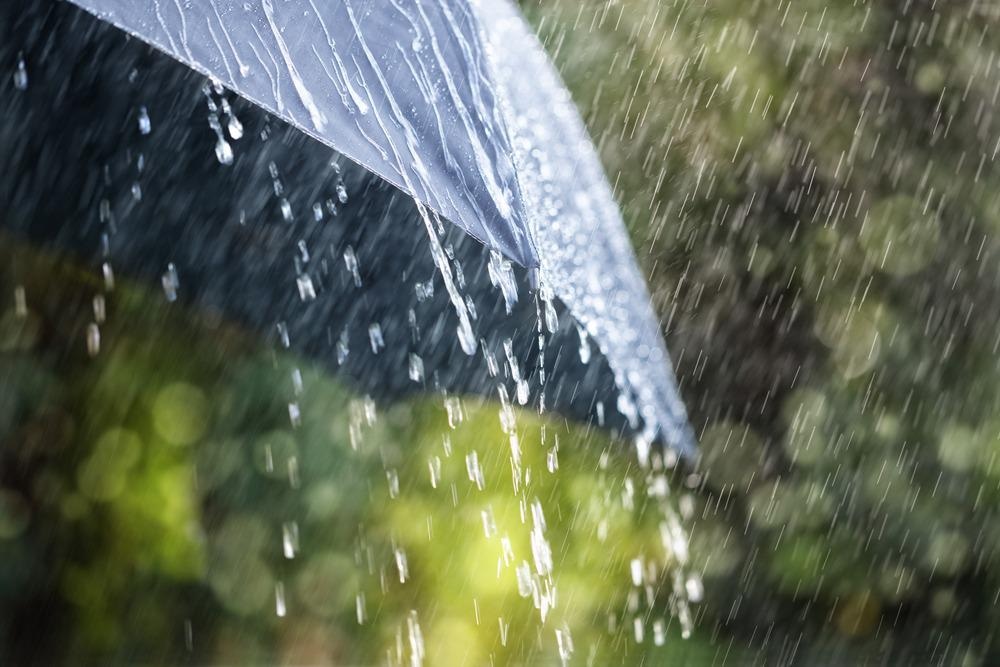The latest article in ACS Applied Nano Materials demonstrates a potential method of generating power utilizing nanolayered Ti3C2Tx MXene films and the ionic characteristics of falling rain.

Study: Power Generation Via Sliding Ionic Droplets on Nanolayered MXene Films. Image Credit: Brian A Jackson/Shutterstock.com
How Ionic Droplets Sliding Generates Electricity?
The generation of electric power by ionic particles rolling across conducting two-dimensional (2D) substances such as graphene is an intriguing matter for both basic research and for industrial utilization.
The energy is typically generated by an electrical potential created by the charging and discharging process of a pseudo capacitor at the front and the back of the drops while rolling. The electric double layer (EDL) at the junction between the drops and the 2D substances aids in the creation of the pseudocapacitors. Since the revelation of this process, research has been conducted to filter compounds for increased power production.
What is MXene Material?
MXenes are famous for their exceptionally high conductance among regularly used 2D materials. They have the generic structure Mn+1XnTx, where M stands for metal complexes, X stands for carbon and/or nitrogen, and T stands for terminal functional groups (OH, O, and F). MXenes excel in a wide range of industrial applications. So far, their main benefit has been their superior metallic electrical conductance and ability to make highly conductive sheets.
MXene flakes scatter quickly in aquatic and certain organic environments, allowing them to be readily treated into hydrophilic MXene films through vacuumed filtering or spray coating. The hydrophilic nature, and the layered constituent morphology, ensure that the moisture in the drops may infiltrate the MXene screen, enhancing the interfacial interaction region between the drop and the MXene nanoparticles. This attribute may improve the MXene sheets' ability to generate energy.
What Makes MXene Films Preferable for Energy production from Falling Drops?
The direct sprinkling of a colloidal suspension of MXene nanosheets enables the manufacture of large-area MXene sheets on a wide range of substrates, which is greatly desired for potential implementation.
MXene film is a viable contender for capturing electricity from raindrops falling because of these synergistic features. MXene, like graphene and other conducting 2D materials, generates energy via pseudocapacitance.
The capacity of cations in the substance to attract electrons should have a considerable influence on the success of electricity production. When cations are not present, no electric power should be produced as there should be no flow of electrons.
Synthesis of MXene
MXenes are made by selectively etching the constituent sheets from 3D MAX phases, which are a broad set of ternary carbides and nitrides. Synthesis and manipulation of MXenes is a major problem, particularly in the field of detectors. The synthesizing is capable of properly controlling the morphologies and exterior termination of MXenes, which have a significant impact on sensory functions.
Experimental Findings
Organic liquids such as dichloromethane (CH2Cl2), dimethyl sulfoxide (DMSO), and DI water were found to have insignificant reaction currents.
It is worth mentioning that the reaction current was 6 μA when 0.01 M CuCl2 was utilized. When compared to prior pure 2D materials, this current is the greatest yet observed. Additionally, the sheet resistance was altered, and it was discovered that when the resistance was raised, the current decreased. The pseudocapacitance process also indicated that power generation had a favorable connection with electrolyte content.
The results indicated that as the film diameter climbed from 3 to 16 μm, so did the voltage and current. Aside from the chemical makeup of the drop, the falling altitude is an important component that impacts the performance of electrical production.
As expected, the power rose with decreasing height, rising from 0.24 to 0.67 A. In the meantime, the voltage rose from 0.9 to 2.6 mV. The increased voltage and current were caused by the increased drop sliding velocity on the MXene film, which was caused by the greater descending altitude.
The sloped pitch/angle of the MXene film is another influencing aspect. The greater the angle, the quicker the droplet slides and, thus, the greater the current and voltage.
In short, the performance and efficiency obtained were superior when compared to the alternatives. However, oxidation stability is still a major limiting factor. More research will be required to stabilize the films for long-term usage.
In the future, this research could pave the way for commercial utilization of this highly advantageous process.
Reference
Bai, Y., Chen, C., Liu, X., Gao, J. and Sui, K., (2022). Power Generation Via Sliding Ionic Droplets on Nanolayered MXene Films. ACS Applied Nano Materials. https://pubs.acs.org/doi/full/10.1021/acsanm.1c04414
Disclaimer: The views expressed here are those of the author expressed in their private capacity and do not necessarily represent the views of AZoM.com Limited T/A AZoNetwork the owner and operator of this website. This disclaimer forms part of the Terms and conditions of use of this website.